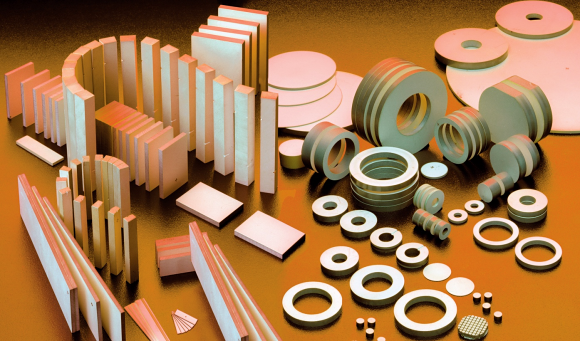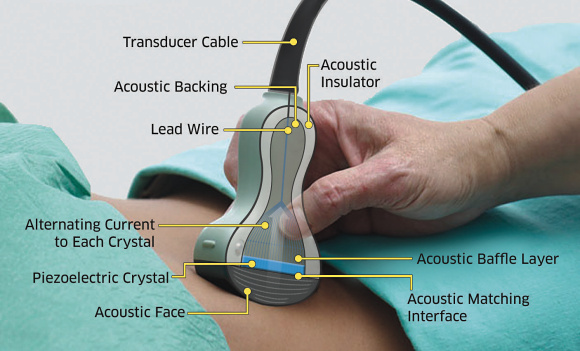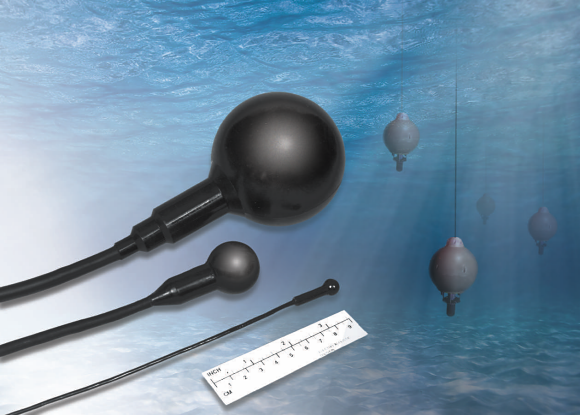
Introduction
The success of any medical device depends in large part on effective communication between a device-maker and their suppliers; from the cost, to the rollout, to the satisfaction of the end user. Here are the most important things medical device manufacturers need to consider and communicate to their piezoceramic supplier.
Doctors talk to patients, nurses talk to medical assistants, medical device makers talk to their piezoceramics suppliers, or at least they should. While makers of medical technologies like aspirators, surgical handpieces, nebulizers and ultrasonic cleaners need piezoceramics for their products to function correctly, conversations about exactly what kind of product is needed and how it will be used don't happen as often as they should.
Everyone agrees that medical technology has to be designed to the highest possible standards of quality and efficiency. What is often less obvious is how difficult it can be for a company to create high-quality devices while ensuring a smooth, low-risk and cost-effective design and production process.
Often, a lack of communication between customer and supplier can hamper this goal. It may not seem like much, but a little bit of extra information in the early stages of device design and material gathering can go a long way. Setbacks in the process can be avoided, the lifetime of the device can be prolonged, and partners can rest assured the product will function properly by establishing a few things up front.
Piezoceramics
Piezoceramics are a family of materials capable of producing an electrical charge in response to mechanical stress. They also exhibit mechanical strain when subjected to an electrical field.
They can be used across a range of commercial and medical applications such as material flaw detection, micro positioning, imaging, wound care, drug delivery, rate and flow sensors, and suture welding. Piezoceramics are ubiquitous in medical devices, forming integral parts of medical and dental hand pieces, aspirators, nebulizers, and ultrasonic cleaners.

Fig. 1: Piezoceramic materials exhibit a range of properties for a large variety of medical applications. Creating a high performance product requires the right transducers. To this end, a piezoceramic supplier needs to have an information bank about the device and its intended use.
Because of the sheer variety of transducer properties and characteristics, device-makers in the early stages of development are often unsure exactly what they are looking for, let alone what design-and-use information to pass onto suppliers. This makes the supplier's job more difficult as they've got to work with the customer to come up with the best combination of properties and performance expectations to create the right product.
Each piezoceramic material has acoustic and electrical characteristics that serve and enhance unique transducer attributes. For the piezoceramic supplier, understanding the complete device application and desired measurement outcome is imperative. From a supplier's perspective, in evaluating medical transducer applications for specialized engineered solutions, it's important to ask several questions of the device-maker.
Here's a list of the six most important things piezoceramics suppliers need to know in order to best support a successful device design and a high-performance product.
1. Application — The supplier needs to know what the device will do. Will it perform bubble or flow sensing, acoustic or medical imaging? Will it measure Doppler blood flow or liquid levels? Are you looking for surgical tool use or power applications? Will it perform nebulization, cell disruption, or cosmetic or physical therapeutics?

Fig. 2: An example of a medical imaging transducer used for abdominal scanning. The transducer uses Exelis PZT (lead zirconate titanate) material for the transducer acoustic module. The piezoelectric effects are used to transmit and receive the high frequency signals that are interpreted by the electronics and software to create images of biological structures in the body.
2. Electrical Circuit Considerations — A piezoelectric transducer's electrical impedance is a pertinent factor to optimizing its performance. The circuit to which it is connected must have certain characteristics that are dictated by the component's design. What are the intended drive voltage limits and range? Will the device operate with alternating or direct current? Will the device operate wirelessly or cabled? Will it use electrical impedance matching or have specific electrode material requirements?
3. Environment of Use — The performance of any transducer is controlled by various physical properties associated with the material, so it's important to choose a system that is optimized for its environment of use. What temperature range will the transducer be subjected to? Is it liquid or air coupled? Is its intended use active or passive, hand-held or robotic, topical or skin contact, intra-operative or surgical? Will it be sterilization compatible, implantable, or external?

Fig. 3: Piezoceramics produce an electrical charge in response to mechanical stress and exhibit mechanical strain when subjected to an applied electrical field. They can be made in a range of shapes, sizes and configurations. Sonar and acoustic configurations of piezoelectrics have a wide variety of applications, including omnidirectional acoustics.
4. Tolerances — What are the electrical, acoustic, dimensional and environmental requirements? Is there any influence on performance or the transducer housing and mounting due to electrical or dimensional tolerances? Will there need to be special packaging considerations? All transducers react differently when exposed to varied electrical, acoustic, and environmental factors. Certain piezoceramics can be damaged by excessive temperature, mechanical stress or electric fields.
5. Acoustic Performance Envelope — The signals emitted from ultrasonic piezoceramic transducers attenuate or weaken as they propagate. High-frequency acoustic waves are especially susceptible to absorption over increasing distance, thus experiencing large transmission loss. The opposite is true for low-frequency ultrasonic waves. Which is more appropriate for the device? Will it employ high or low acoustic coupling? Will it be a resonant or anti-resonant device with broad or narrow band operation? What's the intended frequency domain? Will it employ continuous or pulse echo functionality?
6. Competitive Influences — Finally, from a production and product life cycle perspective, how do you envision the device and its cost-value relationship? Is it low-cost, single-use and disposable, or reusable? Does it employ commercial off-the-shelf technology? What stage of development is the device at now? Will there be an extensive prototyping phase? Will production be high-volume? Is the device intended for export?
These six factors each play a role in the design of a piezoceramic transducer and in identifying which solution(s) will work best for each customer and application. By providing a supplier with this type of information, device-makers can ensure a better product overall and a smoother, more cost-effective design and production process.
About the Authors
Russell Petrucci and Roger Nessen both work for Exelis Electronic Systems in Salt Lake City. Russell is Director of Business Development, and Roger is Senior Business Development Manager.
Related Stories
Thermoelectric Energy Harvesting
Using a Small Solar Cell and a Supercapacitor in a Wireless Sensor
Energy Harvesting-The Next Evolution for Wireless Sensors